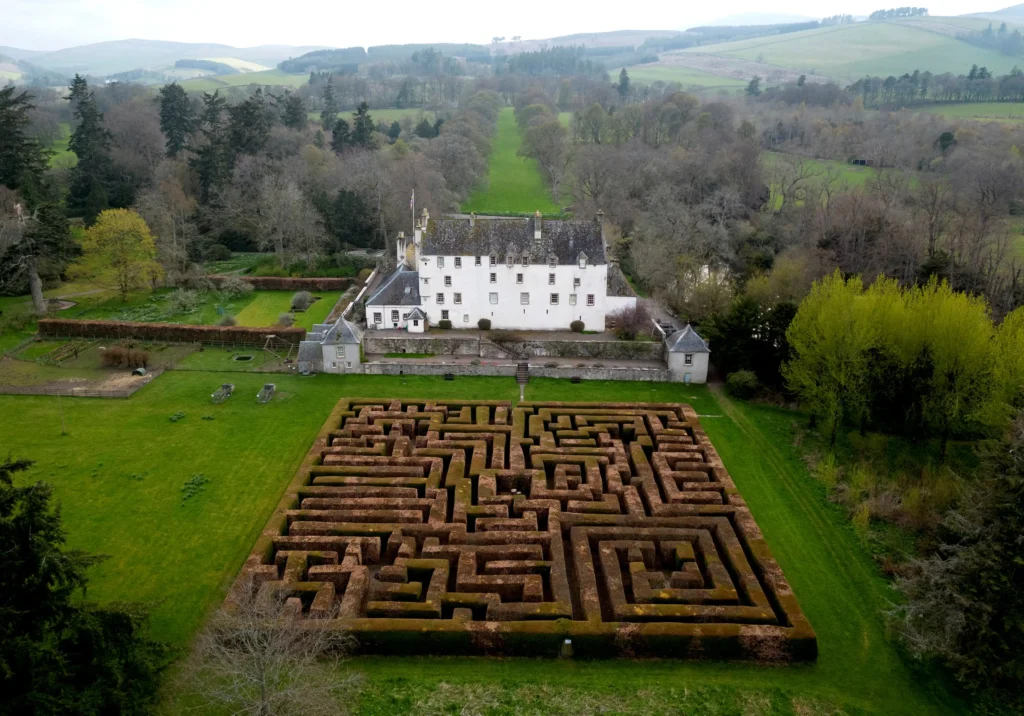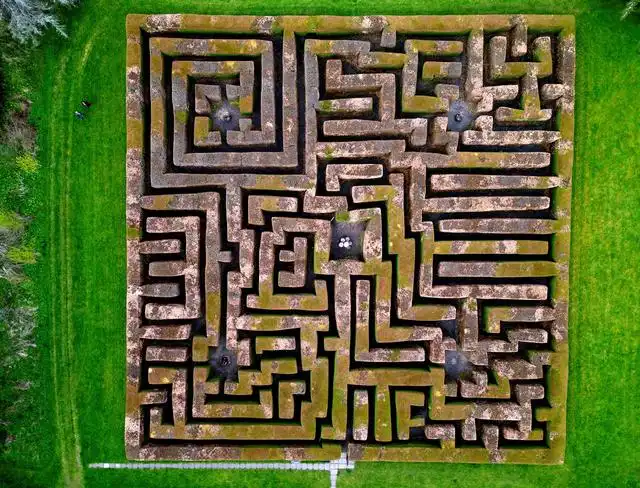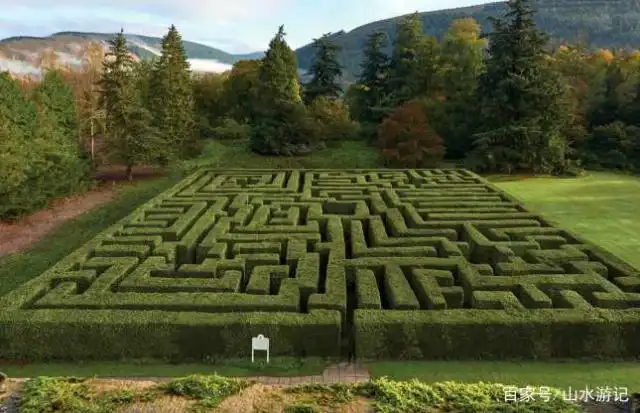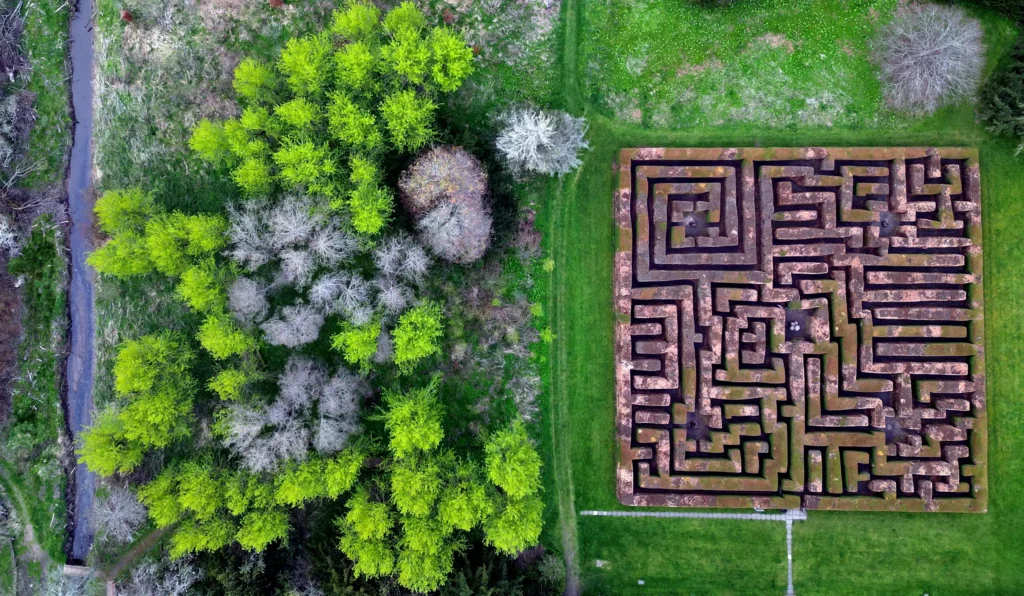The Traquair House Maze, located near the town of Innerleithen on the Scottish border in the UK, is one of the largest hedge mazes in Scotland. It was originally built in 1981 and is located in the historical garden of Traquair House. The original site was once a French flower bed in the 18th century. The maze covers an area of approximately 2,000 square meters and was originally composed of 1,500 Leyland cypress trees. However, the severe cold in 1983 caused two-thirds of the trees to die. Later, more cold-resistant beech trees were replanted instead, resulting in the current evergreen landscape throughout the four seasons.

The design of the maze was completed by the manor craftsman John Schofield. Its paths are mainly geometric lines and there are no dead ends like those in traditional mazes. Tourists need to reach the four sub-centers in sequence to reach the final core area. This layout not only retains the symmetrical aesthetics of Baroque gardens but also adds the interest of exploration. The central area is slightly elevated, allowing visitors to overlook the entire maze and observe the routes of other visitors, thus creating an interactive experience.

The Traquair House Maze is closely linked to the history of the Stuart Dynasty. The manor has been hereditary by the Stuart family since 1491 and has hosted important figures such as Mary Queen of Scots. The garden area where the maze is located still retains the 17th-century walled garden and the 18th-century winery, which together form the cultural heritage of the estate with the maze. During the Easter period every year, the maze holds an Easter egg hunting event. 5,500 mini Easter eggs are hidden in the hedges, attracting a large number of family tourists to participate.

Nowadays, the maze is open to the public as part of Traquair House, and visitors can enter to explore after visiting the manor buildings. Wandering among the neatly trimmed hedges, one can not only feel the peaceful atmosphere of the Scottish border but also trace the evolution of European garden art 300 years ago through the design of the maze. From the historic Bear Gates legend to modern parent-child activities, the Traquair House Maze, with its unique integration, has become an important landmark of cultural tourism in Scotland.

This post is also available in Afrikaans, Azərbaycan dili, Bahasa Indonesia, Bahasa Melayu, Basa Jawa, Bosanski, Català, Cymraeg, Dansk, Deutsch, Eesti, Español, Esperanto, Euskara, Français, Frysk, Galego, Gàidhlig, Hrvatski, Italiano, Kiswahili, Latviešu valoda, Lietuvių kalba, Magyar, Nederlands, O'zbekcha, Polski, Português, Română, Shqip, Slovenčina, Slovenščina, Suomi, Svenska, Tagalog, Tiếng Việt, Türkçe, Íslenska, Čeština, Ελληνικά, Беларуская мова, Български, Кыргызча, Македонски јазик, Монгол, Русский, Српски језик, Татар теле, Українська, Қазақ тілі, Հայերեն, עברית, ئۇيغۇرچە, اردو, العربية, سنڌي, فارسی, كوردی, پښتو, नेपाली, मराठी, हिन्दी, অসমীয়া, বাংলা, ਪੰਜਾਬੀ, ગુજરાતી, தமிழ், తెలుగు, ಕನ್ನಡ, മലയാളം, සිංහල, ไทย, ພາສາລາວ, ဗမာစာ, ქართული, አማርኛ, ភាសាខ្មែរ, 日本語, 简体中文, 繁体中文 and 한국어.
